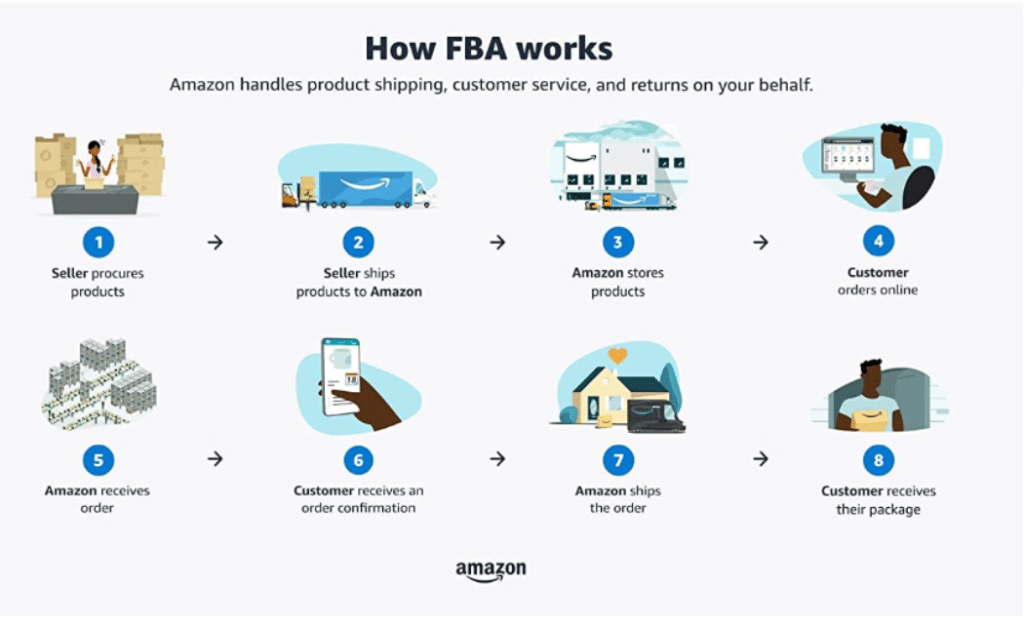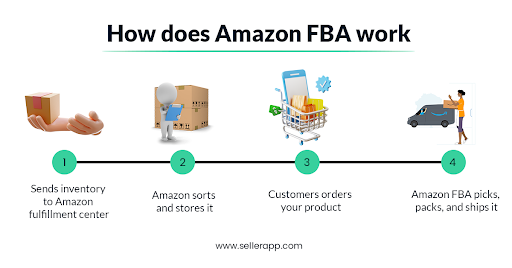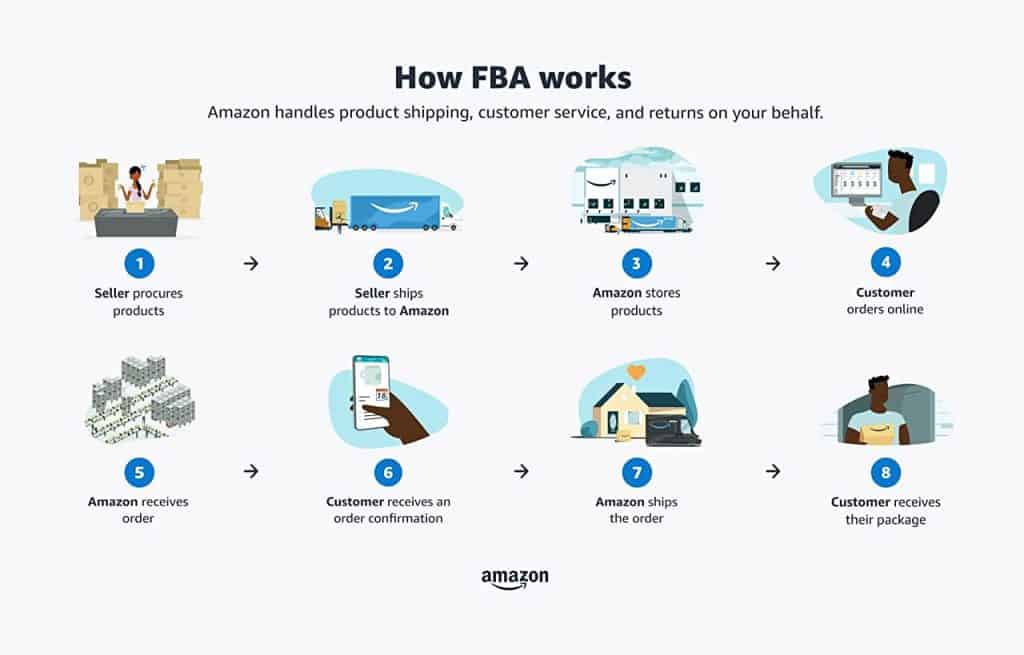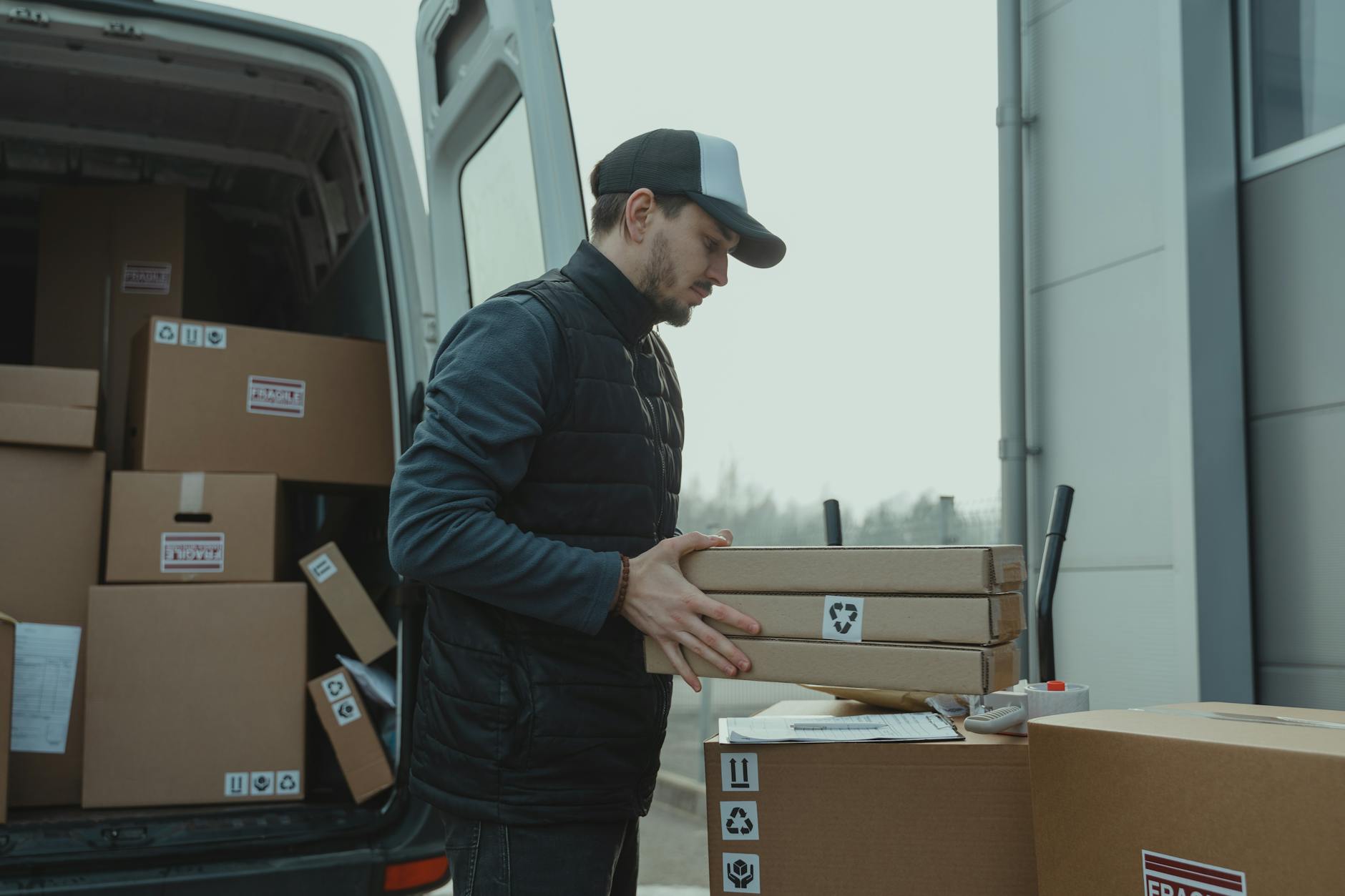Discover how to launch a successful FBA business with this ultimate beginner’s guide – turn your passion into profit!
Table of Contents
- Introduction to Amazon FBA
- What You Need to Start an Amazon FBA Business
- Finding the Right Products to Sell
- Setting Up Your Amazon Seller Account
- Understanding Amazon FBA Fees
- Creating Your Product Listings
- Marketing Your Products
- Managing Your Inventory
- Scaling Your Amazon FBA Business
- Learning From Others
- Conclusion: Taking the First Step
- FAQs
Introduction to Amazon FBA
Welcome, young entrepreneur, to the exciting world of Amazon FBA! But what exactly is Amazon FBA, and why is it such a smart choice for starting a business? Let’s dive in and explore this innovative way of selling products online.
Amazon FBA stands for Fulfillment by Amazon, where you, as the seller, send your products to Amazon’s fulfillment centers. Amazon then takes care of storing your inventory, packing your orders, and shipping them to customers. This allows you to focus on growing your business without the hassle of handling logistics.
What You Need to Start an Amazon FBA Business
Before you dive into the world of Amazon FBA, it’s crucial to understand how the model works. Amazon FBA, which stands for Fulfillment by Amazon, means that Amazon handles storage, packing, and shipping of your products. This allows you to focus on finding great products and growing your business.
Budgeting for Start-Up Costs
While starting an Amazon FBA business doesn’t require a huge investment compared to other types of businesses, you’ll still need some money to get started. The amount you’ll need can vary based on the products you choose to sell, but setting aside a budget for inventory, shipping, and other fees is essential for a successful start.
Finding the Right Products to Sell
When starting an Amazon FBA business, one of the crucial steps is finding the right products to sell. Your success as a seller largely depends on the products you choose to offer. Here are some tips on how to select products that will sell well on Amazon FBA.

Image courtesy of via Google Images
Researching Popular Products
One of the first things you should do is research popular products that are currently in demand. Look for items that have a high search volume on Amazon and are trending among customers. By offering products that people are actively searching for, you increase your chances of making sales.
Analyzing Competition
It’s also essential to analyze the competition for the products you’re interested in selling. Take a look at other sellers offering similar products and see how you can differentiate yourself. Look for ways to stand out, whether it’s through pricing, packaging, or unique product features. Understanding your competition will help you position your products effectively in the market.
Setting Up Your Amazon Seller Account
Before you can start selling on Amazon FBA, you need to set up your Amazon seller account. Follow these steps to get started:
Choosing Your Account Type
There are two main types of Amazon seller accounts: Individual and Professional. If you’re just starting out, an Individual account may be the best choice as it has lower monthly fees. However, a Professional account gives you access to additional features and benefits like bulk listing tools and the ability to sell in more categories.
The Sign-Up Process
When signing up for your Amazon seller account, you’ll need to provide some basic information like your name, address, and bank account details for payments. You’ll also need to verify your identity and set up your account preferences. Once everything is set up, you’re ready to start listing your products for sale on Amazon FBA.
Understanding Amazon FBA Fees
When you decide to start your own Amazon FBA business, it’s crucial to understand the fees that come with using this service. By knowing what costs to expect, you can budget effectively and set yourself up for success in the long run.

Image courtesy of via Google Images
Types of Fees
Amazon FBA charges sellers a variety of fees for their services. These include storage fees, fulfillment fees, referral fees, and more. Storage fees are based on the amount of space your products occupy in Amazon’s warehouses, and fulfillment fees cover the costs of picking, packing, and shipping your products to customers. Referral fees are charged as a percentage of the total selling price of your items.
Calculating Your Costs
To estimate the fees you’ll pay for using Amazon FBA, you can use the FBA revenue calculator provided by Amazon. This tool allows you to input details about your products, such as size and weight, and provides an estimate of the fees you can expect to pay. By using this calculator, you can plan ahead and ensure that your pricing strategy aligns with your budget.
Creating Your Product Listings
When it comes to selling products on Amazon FBA, creating attractive and informative product listings is essential. Your listings are the first impression shoppers will have of your products, so it’s crucial to make them stand out. Here are some tips to help you craft compelling product listings that will catch the eye of potential buyers.
Writing Descriptive Titles
One of the most important elements of your product listing is the title. Your title should be clear and concise, while also including relevant keywords that customers may search for. Make sure to highlight the key features and benefits of your product in the title to entice shoppers to click on your listing.
Taking High-Quality Photos
High-quality photos are another critical component of a successful product listing. Clear, well-lit images that showcase your product from multiple angles can help build trust with potential buyers and give them a better idea of what to expect. Be sure to follow Amazon’s guidelines for product photos to ensure your listings meet their standards.
Marketing Your Products
Once you have your products listed on Amazon FBA, it’s essential to spread the word to potential customers. Marketing your products effectively can greatly increase your sales and boost your business. Here are some tips on how to do just that:

Image courtesy of via Google Images
Using Amazon’s Advertising Tools
Amazon provides various advertising tools to help sellers promote their products. Sponsored Products, Sponsored Brands, and Sponsored Display ads are options to increase the visibility of your listings. By strategically using these advertising tools, you can reach more customers and drive traffic to your products.
| Step | Description |
|---|---|
| 1 | Choose a product niche |
| 2 | Research competition and demand |
| 3 | Find a supplier |
| 4 | Create a seller account on Amazon |
| 5 | List your products on Amazon |
| 6 | Optimize product listings |
| 7 | Launch marketing campaigns |
| 8 | Monitor sales and adjust strategy |
Promotions and Discounts
Offering promotions and discounts is a great way to attract customers and encourage them to buy your products. You can run limited-time deals, discount codes, or bundle offers to entice shoppers. By creating a sense of urgency and value, you can increase your sales and build a loyal customer base.
Managing Your Inventory
When running an Amazon FBA business, it’s crucial to manage your inventory effectively. This means keeping track of the products you have available to sell so you never run out of stock. Let’s dive into some key strategies for inventory management.
Stock Replenishment
One of the most important aspects of managing your inventory is ensuring that you always have enough stock to meet customer demand. Keep an eye on your sales trends and use this data to forecast how much inventory you need to order. By staying ahead of your stock levels, you can avoid running out of popular products and missing out on sales opportunities.
Inventory Storage
Amazon offers storage solutions for your inventory through their fulfillment centers. Understanding how Amazon stores your products and optimizing your inventory storage can help you save on fees and streamline your operations. Make sure to label your products correctly and keep track of where everything is stored to easily fulfill customer orders.
Scaling Your Amazon FBA Business
One key to growing your Amazon FBA business is to consider expanding the types of products you offer. By diversifying your product range, you can attract a wider range of customers and reduce the risk associated with relying on a single product category. For example, if you currently sell beauty products, you might explore adding home goods or electronics to your inventory. This way, you can appeal to different customer preferences and potentially increase your sales.

Image courtesy of via Google Images
Exploring Business Expansion
To take your Amazon FBA business to the next level, it’s important to consider expanding your operations. This could mean scaling up your marketing efforts, increasing your product range, or even exploring international markets. By analyzing your business performance and identifying areas for growth, you can develop a strategic plan to expand your business. This might involve investing in more inventory, hiring additional staff, or exploring new distribution channels. By continually looking for ways to expand and improve your business, you can maximize your profits and achieve long-term success.
Learning From Others
When starting your Amazon FBA journey, it’s crucial to learn from those who have already walked the path you’re about to embark on. By tapping into the wisdom and experiences of others, you can avoid common pitfalls and fast-track your success.
Online Communities
One valuable resource for gaining insights and advice is online communities like Reddit. Here, you can connect with fellow Amazon FBA entrepreneurs, ask questions, and learn from their successes and failures. Whether you’re seeking tips on product sourcing, marketing strategies, or navigating Amazon’s policies, these communities can provide a wealth of knowledge.
Educational Resources
Additionally, consider enrolling in courses that specialize in enhancing your Amazon FBA business. These courses can cover a range of topics, from optimizing product listings to leveraging advertising tools effectively. By investing in your education, you can acquire the skills and strategies needed to take your Amazon FBA business to the next level.
Conclusion: Taking the First Step
Starting an Amazon FBA business might seem daunting at first, but with the right guidance and a solid plan, you can take that first step towards building a successful online venture. Remember, Rome wasn’t built in a day, and neither will your Amazon FBA empire. Here are some key points to keep in mind as you embark on this exciting journey:

Image courtesy of via Google Images
Understanding the Basics
Before diving headfirst into the world of Amazon FBA, make sure you have a good grasp of how the business model works. Take the time to educate yourself on the ins and outs of selling on Amazon, so you can make informed decisions every step of the way.
Setting Realistic Goals
It’s important to set achievable goals for your Amazon FBA business. Rome wasn’t built in a day, and neither will your Amazon FBA empire. Start small, learn from your experiences, and gradually scale up as you gain more confidence and see success.
Seeking Support and Advice
Don’t be afraid to reach out to online communities like Reddit for support and advice. There are plenty of experienced sellers out there who are willing to share their knowledge and help you navigate the challenges of running an Amazon FBA business.
Remember, the key to success lies in taking that first step. So, roll up your sleeves, get started, and watch your Amazon FBA business flourish.
FAQs
Do I need a lot of money to start an Amazon FBA business?
Starting an Amazon FBA business doesn’t necessarily require a large amount of money upfront. While there are fees and costs associated with starting, such as product sourcing, initial inventory, and Amazon seller fees, you can start small and gradually invest more as your business grows. Many successful Amazon FBA sellers started with a modest budget and scaled up as they became more profitable.
How long does it take to start selling on Amazon?
The timeline for starting to sell on Amazon FBA can vary depending on several factors, including how quickly you complete the necessary steps. Generally, the process involves setting up your Amazon seller account, sourcing products, creating listings, and sending your inventory to Amazon’s fulfillment centers. This can take anywhere from a few weeks to a few months, but with efficient planning and execution, you can start selling on Amazon relatively quickly.
